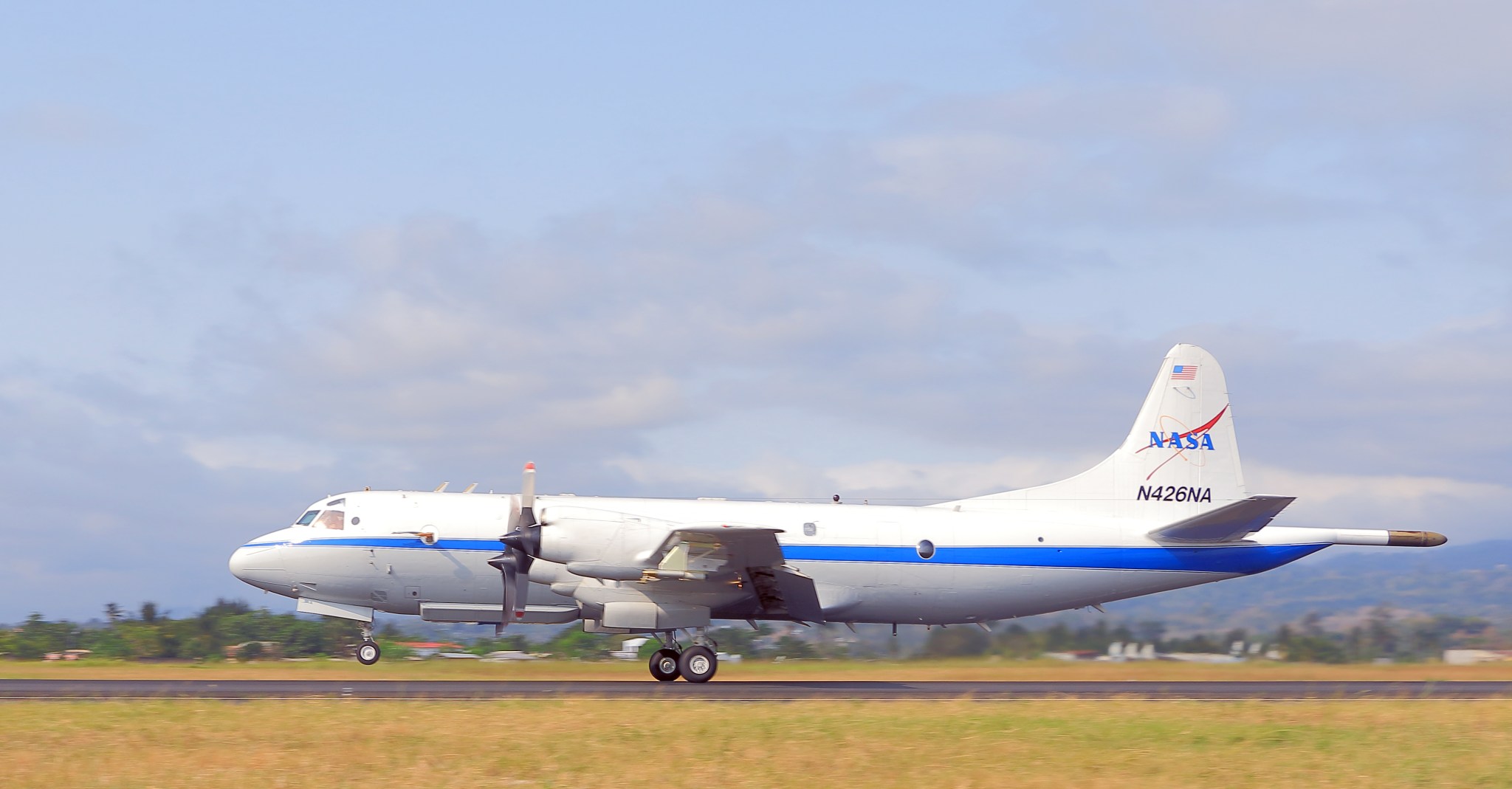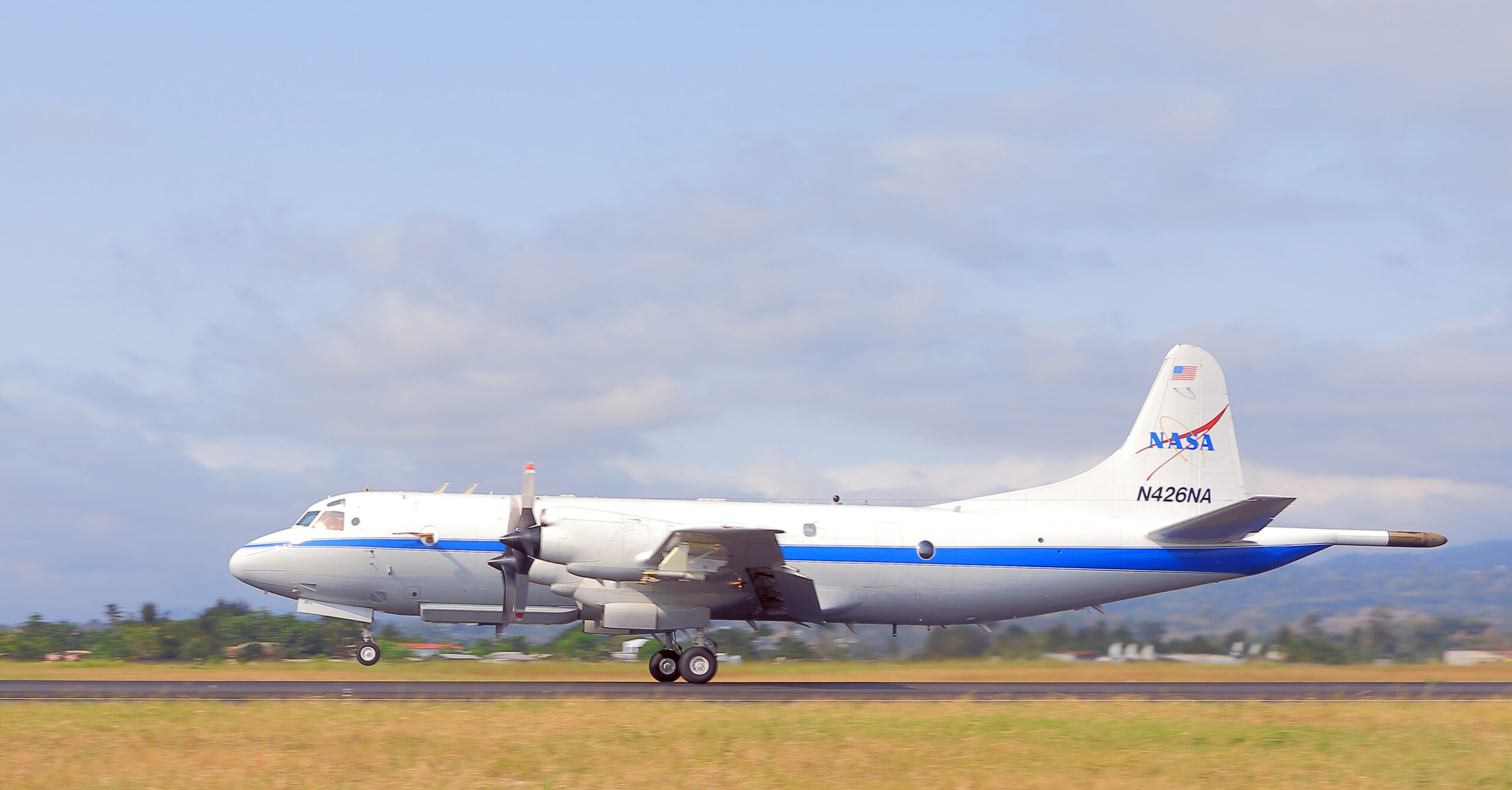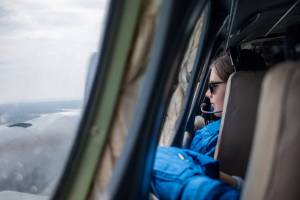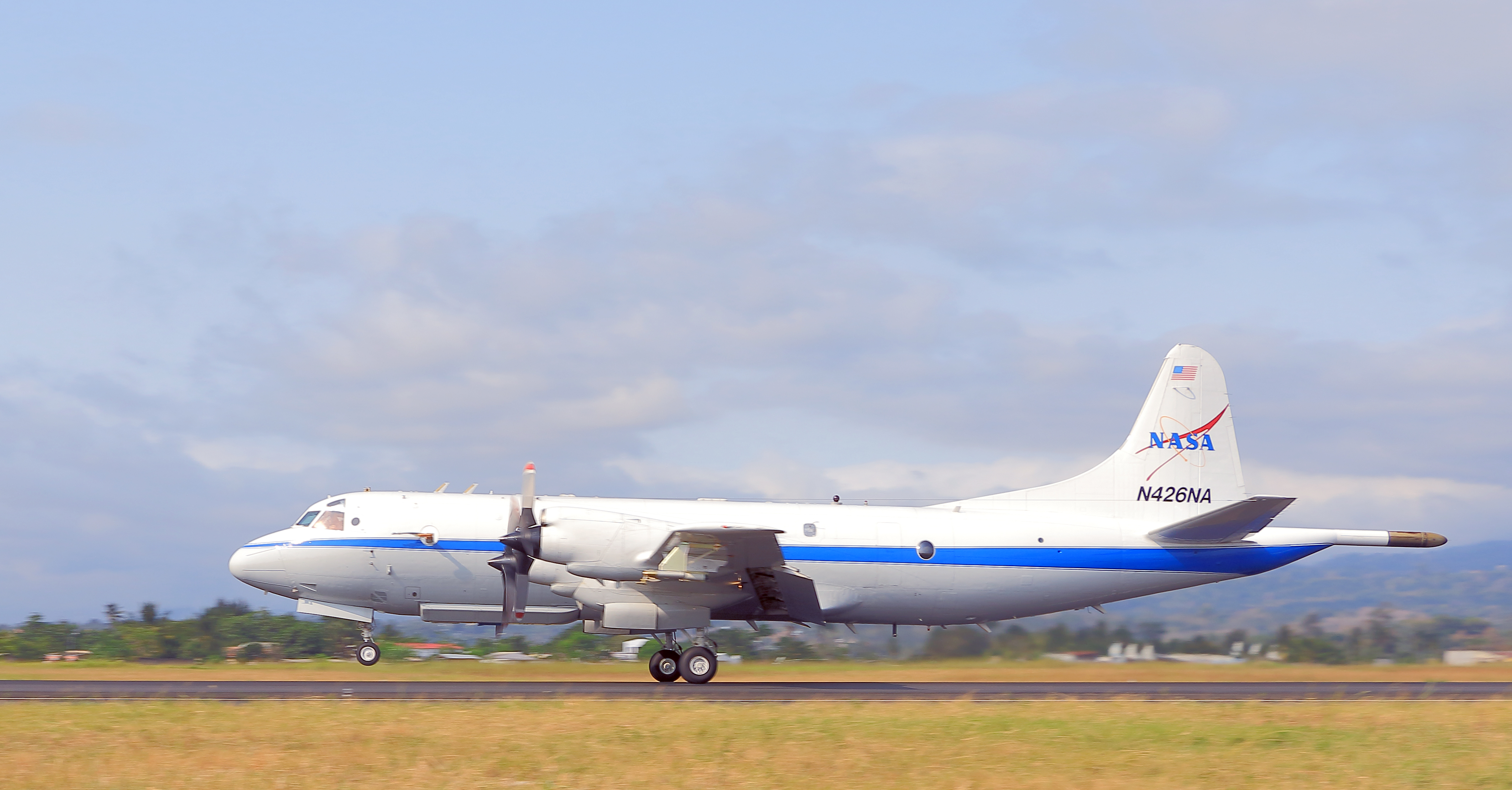2 min read
Preparations for Next Moonwalk Simulations Underway (and Underwater) This summer between June 17 and July 2, NASA will fly aircraft over Baltimore, Philadelphia, parts of Virginia, and California to collect data on air pollutants and greenhouse gas emissions.
The campaign supports the NASA Student Airborne Research Program for undergraduate interns.
 Two NASA aircraft, including the P-3 shown here, will be flying over Baltimore, Philadelphia, Virginia and California between June 17 and July 2, to collect data on air pollutants and greenhouse gas emissions. Credit: (NASA/ Zavaleta) The East Coast flights will take place from June 17-26. Researchers and students will fly multiple times each week in Dynamic Aviation’s King Air B200 aircraft at an altitude of 1,000 feet over Baltimore and Philadelphia as well as Norfolk, Hampton, Hopewell, and Richmond in Virginia. Meanwhile, a NASA P-3 aircraft based out of NASA’s Wallops Flight Facility in Virginia will fly over the same East Coast locations to collect different measurements.
Two NASA aircraft, including the P-3 shown here, will be flying over Baltimore, Philadelphia, Virginia and California between June 17 and July 2, to collect data on air pollutants and greenhouse gas emissions. Credit: (NASA/ Zavaleta) The East Coast flights will take place from June 17-26. Researchers and students will fly multiple times each week in Dynamic Aviation’s King Air B200 aircraft at an altitude of 1,000 feet over Baltimore and Philadelphia as well as Norfolk, Hampton, Hopewell, and Richmond in Virginia. Meanwhile, a NASA P-3 aircraft based out of NASA’s Wallops Flight Facility in Virginia will fly over the same East Coast locations to collect different measurements.
The West Coast flights will occur from June 29 – July 2. During the period, those same aircraft will conduct similar operations over Los Angeles, Imperial Valley, and Tulare Basin in California.
The research aircraft will fly at lower altitudes than most commercial planes and will conduct maneuvers including vertical spirals from 1,000 to 10,000 feet, circling over power plants, landfills, and urban areas. They will also occasionally conduct “missed approaches” at local airports, where the aircraft will perform a low-level flyby over a runway to collect samples close to the surface.
The aircraft carry instruments that will collect data on a range of greenhouse gases including carbon dioxide and methane, as well as air pollutants such as nitrogen dioxide, formaldehyde, and ozone. One purpose of this campaign is to validate space-based measurements observed by the TEMPO (Tropospheric Emissions: Monitoring of Pollution) mission. Launched on a commercial satellite in April 2023, the TEMPO instrument provides hourly daytime measurements of air pollutants across the United States, northern Mexico, and southern Canada.
“The goal is that this data we collect will feed into policy decisions that affect air quality and climate in the region,” said Glenn Wolfe, a research scientist and the principal investigator for the campaign at NASA’s Goddard Space Flight Center in Greenbelt, Maryland.
The B-200 aircraft is owned by Dynamics Aviation, an aircraft company contracted by NASA.
For more information about Student Airborne Research Program, visit:
https://science.nasa.gov/earth-science/early-career-opportunities/student-airborne-research-program/
By Tayler Gilmore
NASA’s Goddard Space Flight Center, Greenbelt, Maryland


 5 min read Surf, Turf, Above Earth: Students Participate in NASA Field Research Flying over and tromping through watery landscapes along the East Coast, working alongside NASA scientists,…
5 min read Surf, Turf, Above Earth: Students Participate in NASA Field Research Flying over and tromping through watery landscapes along the East Coast, working alongside NASA scientists,…
 10 min read A Tale of Three Pollutants Freight, smoke, and ozone impact the health of both Chicago residents and communities downwind. A…
10 min read A Tale of Three Pollutants Freight, smoke, and ozone impact the health of both Chicago residents and communities downwind. A…
 4 min read NASA Scientists Take to the Seas to Study Air Quality Article 1 week ago
4 min read NASA Scientists Take to the Seas to Study Air Quality Article 1 week ago 